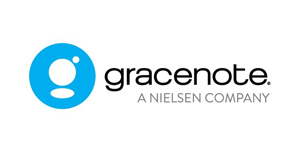
Consumer research juggernaut Nielsen is offering a new research product Audience Predict that forecasts potential audience sizes for entertainment programming in various distribution scenarios.
The goal is to help media companies charts paths for their rolling out their content. Audience Predict is from Nielsen’s Gracenote unit, which tracks content online using metadata — hidden embedded coding.
“Audience Predict analyzes relationships between streaming service or network distribution outlets and anticipated potential program performance utilizing years of proprietary Nielsen viewership data,” says a Nielsen press release. “The solution forecasts potential audience size, composition, reach, and viewing minutes under different distribution scenarios by considering program genre and drop patterns for streaming content or airdate, airtime and lead-in for linear content.”
Nielsen is best known as purveyor of TV ratings, though the upheaval in the marketplace has rattled the TV ratings giant. What’s noteworthy:
- Nielsen’s classic TV ratings simply counted heads and provides rudimentary demographic information — age, gender, location, etc. — of those viewers. So predictive data represents a departure from its historical business.
- The digital revolution upends video distribution creating a multitude of avenues into the consumer market; in the past, relatively few distribution tracks existed and were clearly segmented without significant overlap as today.
- Nielsen’s audience viewership data from the past is a treasure trove, but it remains to be seen if still relevant. Content distribution has become more complex and non-standard.
For example, a theatrical film used to run in cinemas exclusively for months just a few years ago — but now is a mashup. Exclusive theatrical runs are shorter, there is no signal standard window for cinema exclusivity and sometimes movies are on video streamers simultaneously with theater runs, even the biggest titles. For example, Warner Bros. Pictures is releasing its 2021 theatrical slate simultaneously on corporate-sibling streamer HBO Max (though WB promises to renew cinema exclusivity next year).

Upheaval everywhere and Audience Predict aims to help media companies navigate the churning marketplace. The Nielsen press release suggests the research tool will “enable data-driven decision-making on program acquisitions, renewals or cancellations for streaming and linear content.” In the past, Nielsen left the analysis to its clients though increasingly consumer marketers want answers, not just lumps of data.
Nielsen is under pressure after trade group the Media Research Council in September yanked MRC’s certification of Nielsen’s legacy TV ratings, creating an uproar. The problem stems from pandemic dislocations making it difficult to recruit households to be part of Nielsen’s sample and also service research equipment in homes during lockdowns. People moved around during the Covid health crisis, and were difficult to track given isolation requirements.
The media industry’s ambition is to create a generally accepted cross-platform audience measurement, but it’s elusive because of the difficulty of obtaining data from disparate media and integrating the data. The media landscape for visual devices includes cell phones, video games, online, traditional TV sets, interactive connected TV sets, video tablets and out-of-home video media, which all don’t fit in the same template.
Digital media enables collecting audience-consumption data from tens of millions of households — such as cable TV tuner boxes — compared to the audience sample of 40,000 for Nielsen’s TV audience panel, so potential data is more plentiful though scattered.
Various competitors aim to replace or operate along-side Nielsen. However, advertisers that use Nielsen TV ratings to place $70 billion a year in TV advertising seem to continue to favor Nielsen TV ratings so far as the industry “currency” of accepted measure. The advertising community also has doubt about others with their own “secret sauce” for audience data, which could simply overstate audience size that would balloon TV commercial prices. Ad spending on streaming and interactive connected TV is around $14 billion, though that doesn’t include cash subscriptions paid by consumers.
Rivals face their own hurdles and stumbles. A major competitor is ComScore, whose financial reporting as a public company was sanctioned in 2019 by the federal stock market regulator over its financial reporting practices. ComScore owns the leading movie boxoffice reporting service.
Nielsen is a $6.3 billion-revenue research juggernaut that also provides consumer goods/services marketers across 60 countries. So Nielsen will be hard to dethrone, given its access to a broad array of data.
Related content:
Leave a Reply